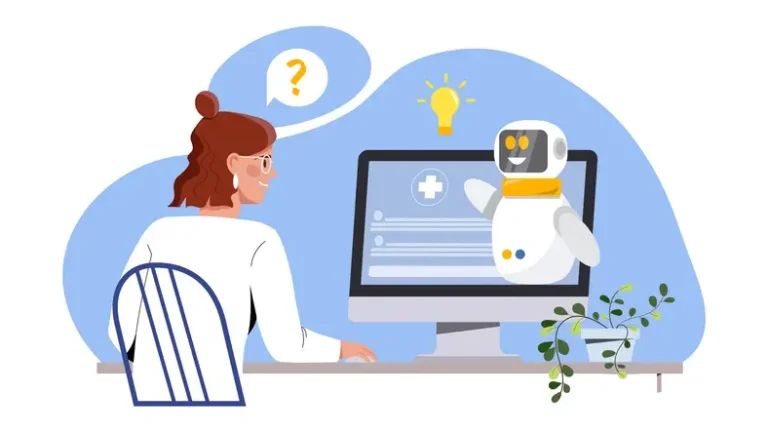How real-time engagement drives faster adoption and better user experiences in health tech

TL;DR:
Agentic AI refers to intelligent systems that operate independently, make decisions, and adapt in real time without constant human oversight. Unlike traditional AI that reacts to prompts, agentic AI sets its own goals and carries them out—making it a transformative force for industries like cybersecurity, software development, and operations.
The adoption of digital health solutions has surged in recent years, but scaling health tech adoption remains a challenge. Whether it’s a patient portal, an AI-driven diagnostic tool, or a clinician-facing SaaS product, getting healthcare professionals and patients to embrace new technology requires strategic engagement and thoughtful onboarding.
Health tech leaders often struggle with low user adoption, slow onboarding, and resistance to change. This is especially true for healthcare providers who are already overwhelmed with digital tools.
The key to overcoming these barriers? Real-time engagement.
In this article

Why health tech adoption is challenging
Unlike traditional SaaS products, health tech solutions operate in an environment where the stakes are high. Adoption doesn’t just impact productivity. It can affect patient outcomes, regulatory compliance, and even financial sustainability.
Common barriers to adoption include:
- Lack of trust
Healthcare professionals and patients may be skeptical of new tools, especially if they’ve had bad experiences with clunky software in the past. - Complex onboarding
Many health tech products require training, and if that training isn’t intuitive, users will resist. - Workflow disruption
If a new tool slows down an already time-strapped clinician or requires additional steps, adoption will stall. - Compliance concerns
Security, HIPAA compliance, and data privacy fears can cause hesitation in both healthcare organizations and individual users.
The good news? Real-time engagement strategies, like live demos, interactive Q&As, and real-time support, can accelerate onboarding and improve adoption rates.
Here are real-time engagement strategies that work
To scale health tech adoption, companies need to prioritize communication, education, and continuous support. Here are four key strategies to make that happen:
1. Live product walkthroughs for clinicians and patients
One of the biggest reasons users resist a new health tech product is fear of the unknown. If they don’t understand how it fits into their workflow or how it benefits them, they won’t use it.
Why it works: Live walkthroughs allow users to see the software in action, ask questions, and address concerns in real-time. Unlike pre-recorded videos, these sessions create an interactive experience that feels personalized.
Best practices:
- Host separate sessions for different audiences (e.g., patients vs. providers) to address unique concerns.
- Use real-world scenarios to show how the product integrates into daily tasks.
- Make it interactive—allow participants to submit questions before and during the session.
2. Real-time chat support for onboarding and troubleshooting
Even the most intuitive health tech platforms will run into onboarding hiccups. If users hit a roadblock and can’t get immediate help, they’re more likely to abandon the product.
Why it works: A real-time support option can provide instant answers. It reduces frustration and preventing drop-off, whether it’s live chat, AI-powered chatbots, or in-app support.
Best practices:
- Implement live chat within the app so users don’t have to leave to get help.
- Use AI-driven chatbots for common questions but have real human support available for complex issues.
- Provide in-app prompts and tooltips to guide users through their first interactions with the product.
3. Interactive webinars and Q&A sessions with experts
Health tech adoption isn’t just about features — it’s about trust. Healthcare providers, in particular, want to know that a solution is credible, evidence-based, and beneficial to patient care.
Why it works: Bringing in subject matter experts (physicians, healthcare IT leaders, or product engineers) to lead interactive discussions builds credibility and provides social proof that the product is valuable.
Best practices:
- Host a live Q&A session where potential users can ask about real-world applications.
- Offer case studies and success stories to demonstrate measurable impact.
- Ensure sessions are recorded and shareable so stakeholders who couldn’t attend live can still access them.
4. Gamification and real-time progress tracking
Incentives can go a long way in driving adoption. If users can see their progress in real-time, they’re more likely to stay engaged.
Why it works: Gamification elements create a sense of accomplishment and encourage ongoing use, such as progress bars, achievement badges, or real-time feedback on performance.
Best practices:
- Provide real-time insights (e.g., clinicians can see how their use of the platform improves patient engagement).
- Offer small rewards for completing training modules or onboarding steps.
- Create leaderboards or milestone-based incentives to encourage active participation.
How real-time engagement accelerates health tech adoption
By integrating these real-time engagement strategies into your product rollout, you’re not just improving adoption. You’re removing friction from the user journey.
- Shorter learning curves – Live demos and real-time support help users get up to speed faster.
- Fewer abandonment issues – When users have access to immediate help, they’re less likely to quit out of frustration.
- Higher trust and credibility – Engaging with industry experts and showcasing real-world impact builds confidence in the product.
- Better long-term retention – The more interactive and rewarding the experience, the more likely users are to keep using the tool.
Measuring the impact of real-time engagement on health tech adoption
Implementing real-time engagement strategies is just the first step. Measuring their effectiveness is key to optimizing user adoption and retention. Without tracking key metrics, it’s impossible to know what’s working and where users may still struggle.
Key metrics to track
- Adoption rate
The percentage of intended users who actively engage with the product within a set time frame. Look for improvements after launching engagement initiatives. - Time to first value (TTFV)
How quickly users complete key onboarding steps or achieve their first meaningful outcome with the product. Faster TTFV indicates successful real-time engagement. - User retention rate
The percentage of users who continue using the product over time. Higher retention often correlates with better onboarding experiences. - User engagement metrics
Metrics like session duration, feature adoption rates, and participation in live Q&As help gauge how well users interact with the product. - User feedback and satisfaction
Post-onboarding surveys, chat transcripts, and NPS (Net Promoter Score) provide qualitative and quantitative insights into user experience.
Optimizing engagement based on data
Once data is collected, iterating on engagement strategies ensures ongoing improvements. For example:
- If onboarding completion rates are low, offering more live product walkthroughs might help.
- If engagement drops after initial adoption, adding real-time support and gamification could increase long-term retention.
- If users report confusion or frustration, adjusting interactive webinars to address common pain points may improve satisfaction.
By continuously measuring and refining engagement strategies, health tech companies can scale adoption effectively and create a seamless user experience that benefits both patients and providers.
Final thoughts
Scaling health tech adoption requires more than just building a great product. It’s about removing barriers and making it easy for users to succeed. By integrating real-time engagement strategies, health tech companies can ensure that both patients and providers feel supported, informed, and motivated to use their solutions.
At Standard Beagle, we help health tech companies create seamless user experiences that reduce friction, drive adoption, and improve patient outcomes. If you’re looking for a user-centered approach to scaling health tech adoption, let’s talk.
Ready to increase adoption of your digital health product?
We help health tech companies design real-time engagement strategies that work—backed by UX research and implementation support. Request a strategy call with our UX experts.
Frequently asked questions about health tech adoption & real-time engagement
Why is it hard to scale health tech adoption?
Healthcare professionals are overloaded, wary of change, and deeply concerned with compliance. If a product disrupts workflow or feels unsafe, adoption stalls.
What is real-time engagement in health tech?
Real-time engagement refers to strategies like live demos, in-app support, and expert-led webinars that reduce friction and build trust during onboarding.
How can real-time support help with onboarding?
Immediate help during onboarding prevents user frustration, improves learning curves, and reduces the chance that someone gives up or abandons the product.
What metrics help measure health tech adoption success?
Adoption rate, time to first value (TTFV), retention rate, session engagement, and NPS are all key indicators of successful adoption.
Can gamification really work in healthcare tools?
Yes! When done right, small incentives like badges, progress tracking, and feedback loops can improve motivation and long-term engagement.











